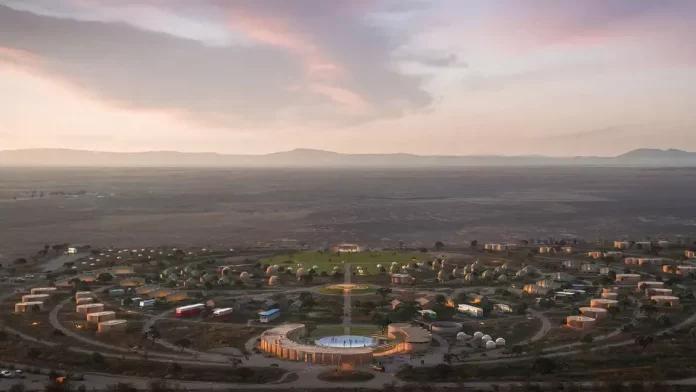
The Marfa lights, a local celestial mystery, will soon have a terrestrial counterpart: El Cosmico, the world’s first 3D-printed hotel and residential community. This is not merely a construction project; it is a groundbreaking collaboration that is redefining the very language of hospitality and design through the unyielding precision of additive manufacturing.
A Collaboration of Visionaries
The visionary behind the original El Cosmico, hotelier Liz Lambert, has joined forces with two titans of modern innovation: Bjarke Ingels Group (BIG), the celebrated Danish architecture firm known for its audacious and context-driven designs, and ICON, the Austin-based construction technology company at the forefront of large-scale 3D printing.
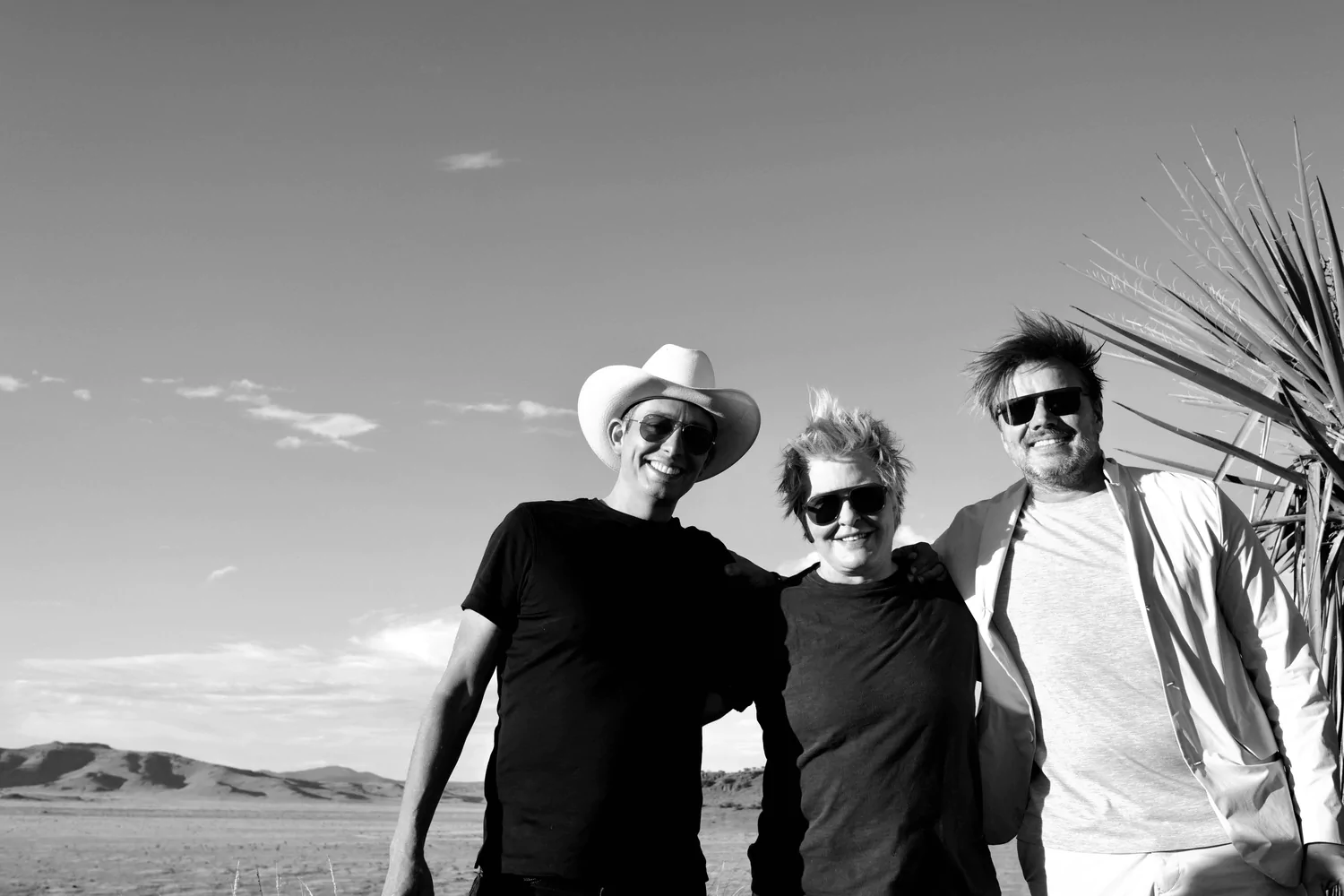
Their partnership transcends a typical client-architect-builder relationship; it is a convergence of artistic ambition and technological prowess, a shared commitment to building in a way that is both deeply responsive to its environment and uninhibited by traditional constraints.
From Tent-Trailers to Fluid Forms
The original El Cosmico opened on a 21-acre site on the edge of Marfa, offering vintage trailers, yurts, tents, and other nomadic lodging, along with art, music, workshops, and stargazing.
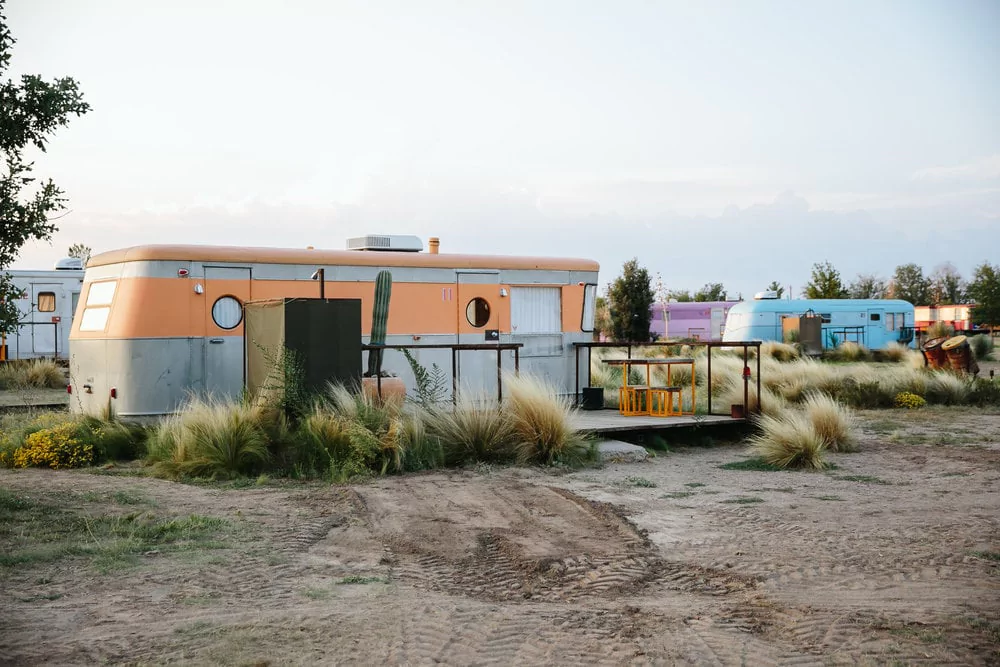
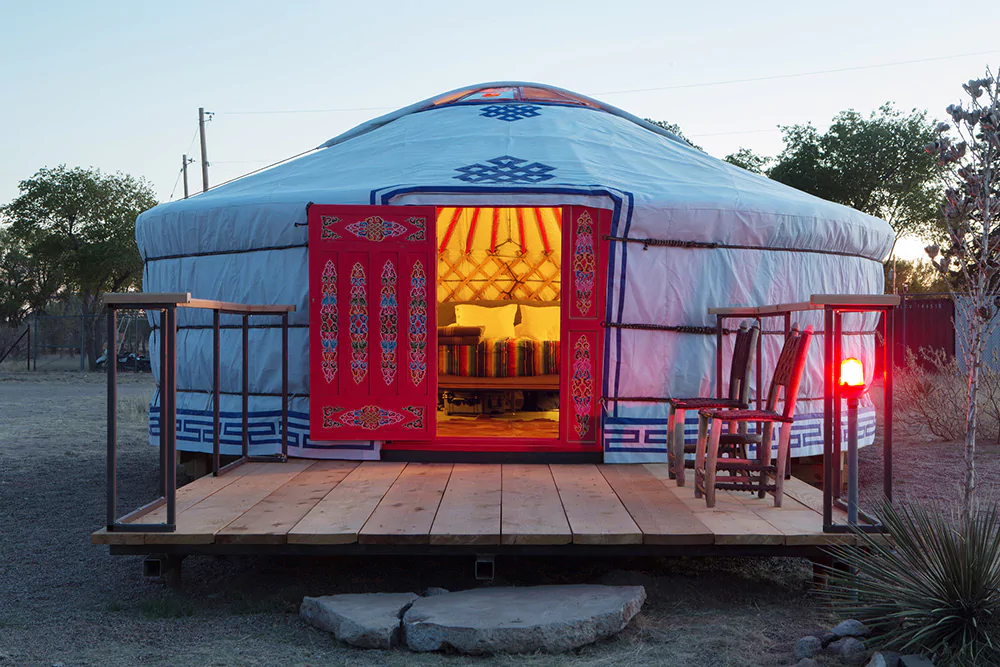
El Cosmico “Tomorrow” (as the project is styled) takes that spirit and amplifies it. Rather than conventional rectilinear construction, Lambert and her collaborators are embracing architectural fluidity: domes, arches, vaults & parabolic curves. BIG’s design philosophy for El Cosmico is rooted in a “conversation between El Cosmico’s past and future,” a dialogue that celebrates organic forms and primordial architectural archetypes.
ICON’s large-scale 3D printer (Vulcan) will do the heavy lifting, laying down layer upon layer of Lavacrete (ICON’s proprietary, cement-based material) to form walls over 12 feet high, with curvatures that would typically incur high costs in traditional construction. The result: buildings that will emerge from the terrain rather than simply sit on it.
Scale, Form, and Facilities
- New size & scope: The development is being relocated to a 60-acre site. The plan includes 43 hotel units and 18 residential homes.
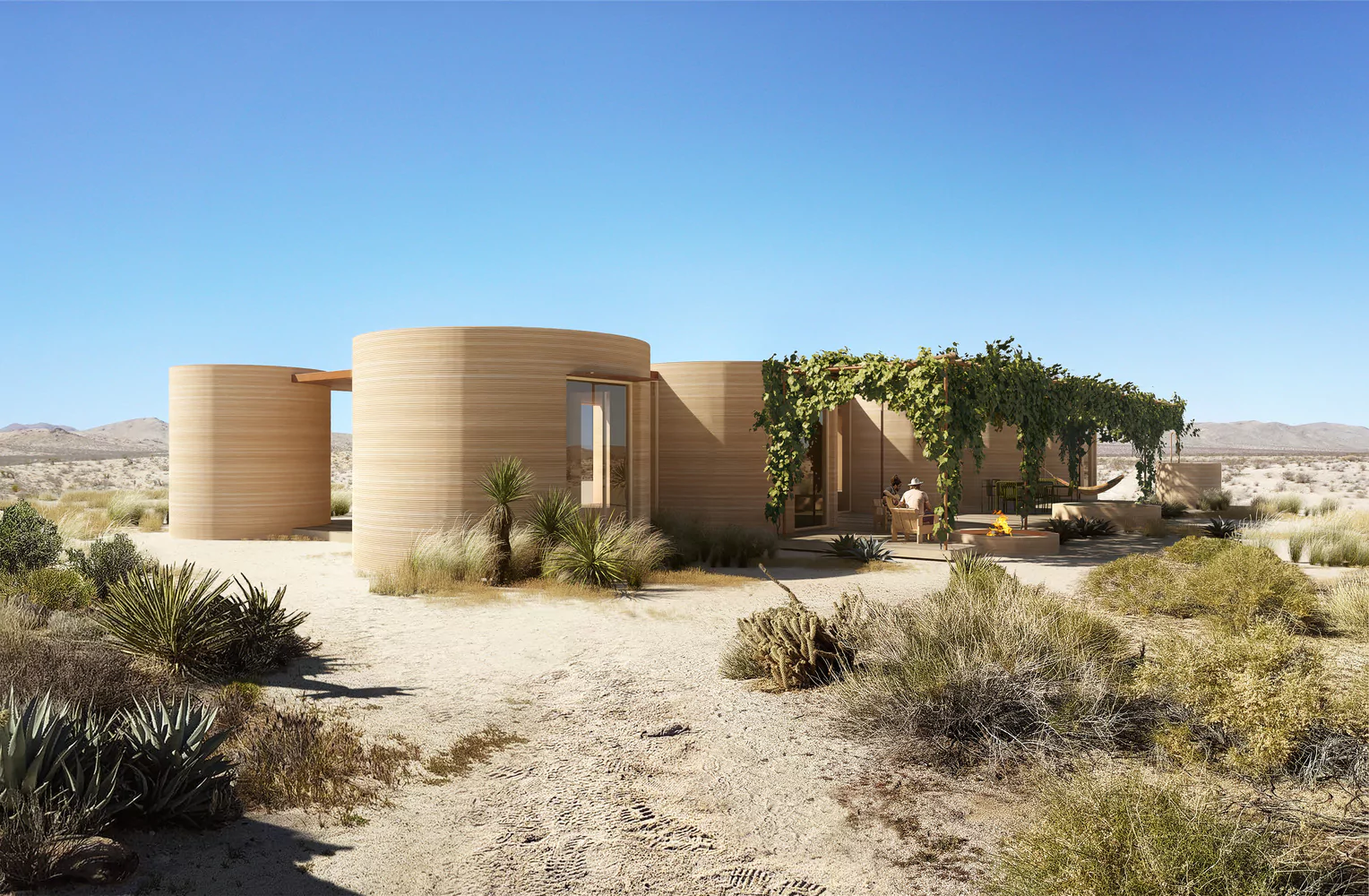
El Cosmico 3D-printed Sunday Homes | Arch Daily - Sunday Homes: 15 – 18 Private residences in the range of 2,000 to 2,500 square feet, with pricing starting at about US$2.29 million. Designed for views of the Davis Mountains.
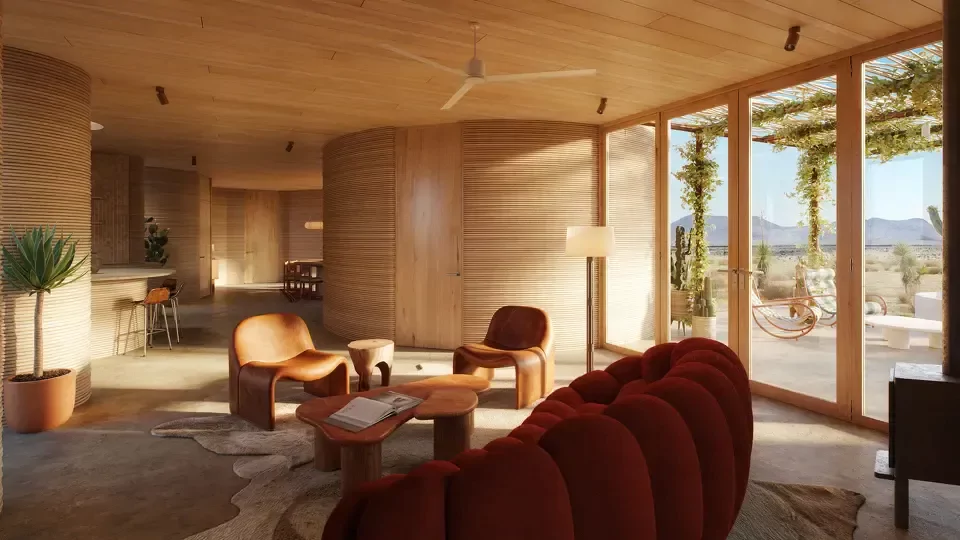
El Cosmico 3D-printed Sunday Homes | Parametric Architecture - Community Hub: Sculptural infinity pool that mirrors the sky, a bathhouse, and a restaurant helmed by a James Beard-nominated chef. This focus on shared experience reflects Liz Lambert’s original ethos of creating a “living laboratory for artistic, cultural, and community experimentation.”
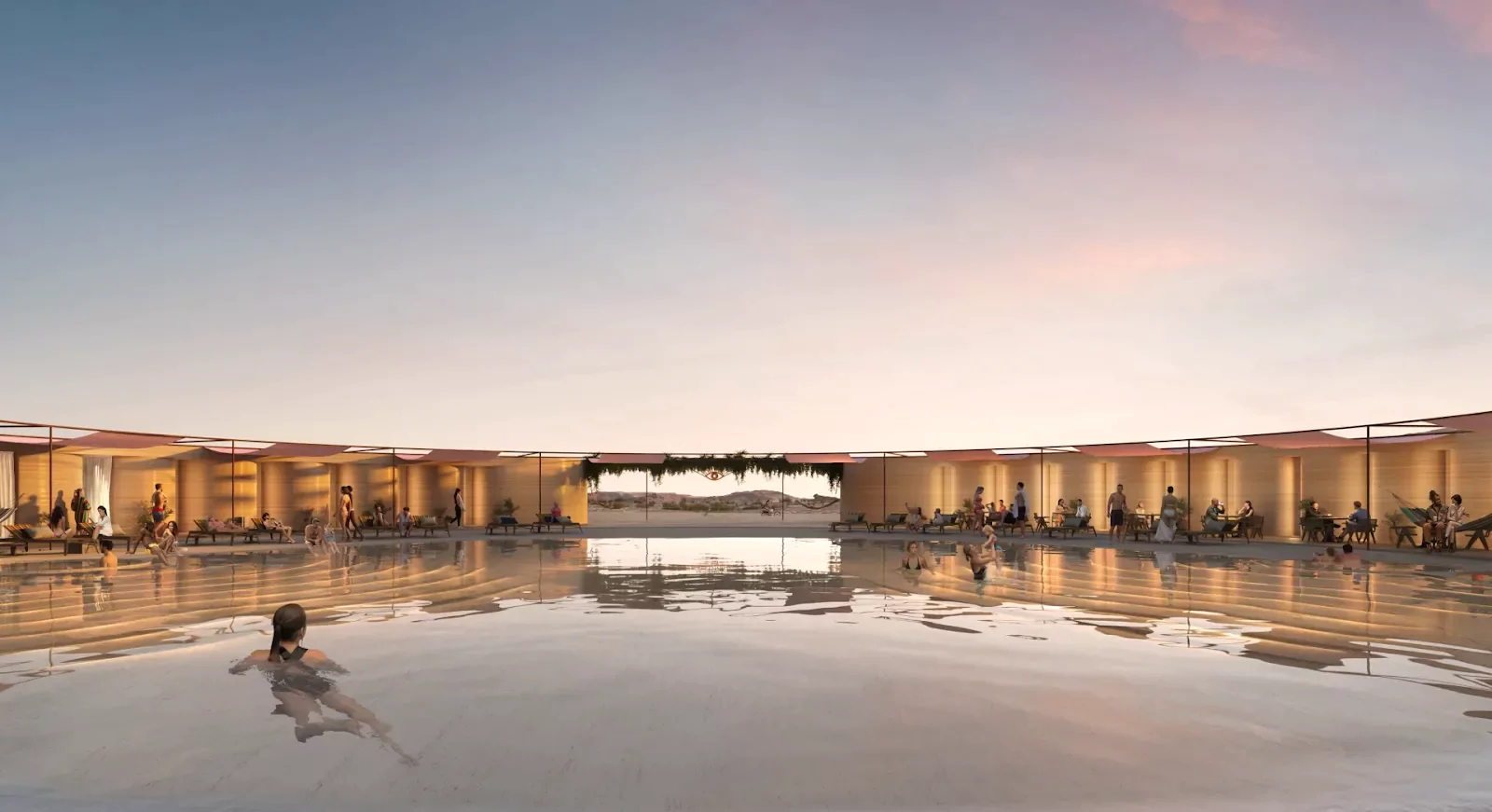
Circular Infinity Pool | Parametric Architecture - Affordable Housing: For the local Marfa community, an initiative that showcases the technology’s potential to address broader societal challenges.
- BIG and ICON are also crafting a 3D-printed pavilion and bandstand for Austin’s SXSW festival, using the same material planned for El Cosmico. Serving as a preview of the technology.
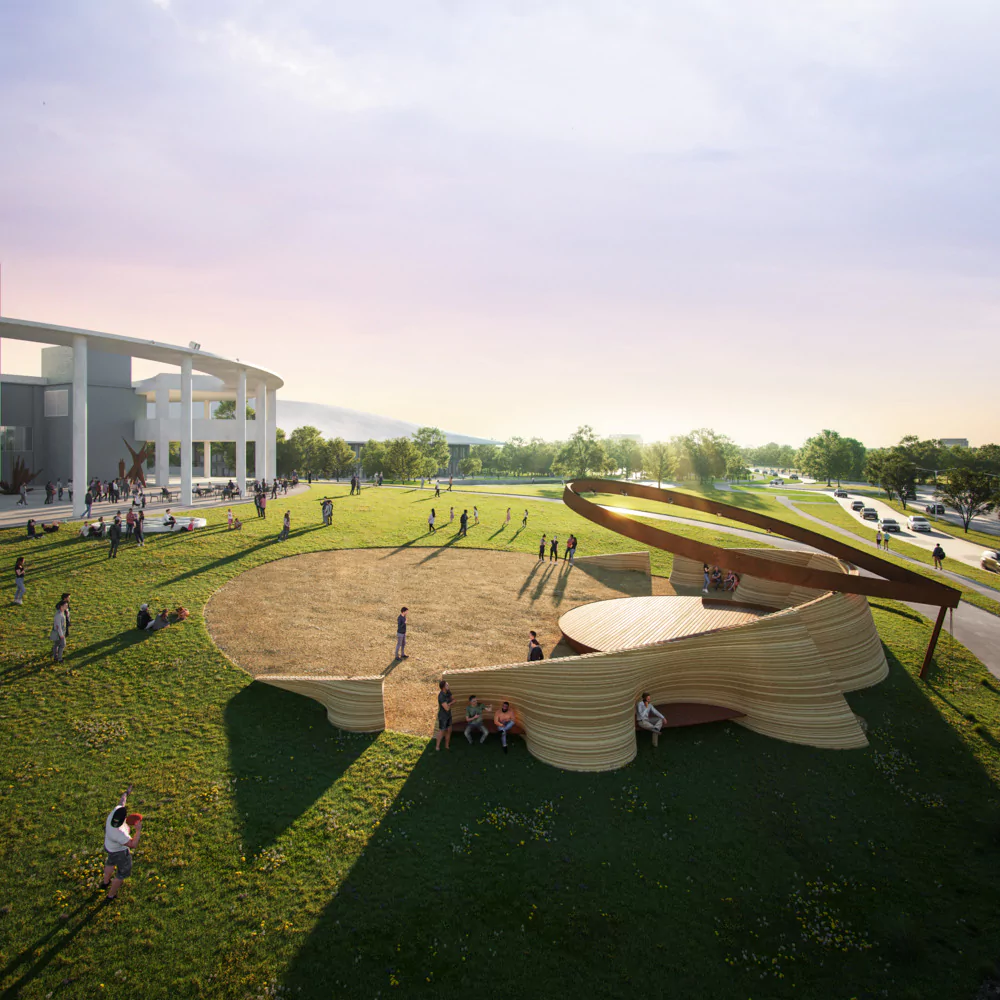
3D Printed Performance Pavilion – The Long Center – Austin, Texas | Arch Daily
The Technology Behind It
Machine: Central to this materialization of a dream is ICON’s revolutionary technology. Their colossal gantry-style 3D printer, the Vulcan. Approximately 46.5 feet wide and 15.5 feet tall; 4-ton multi-axis gantry system.
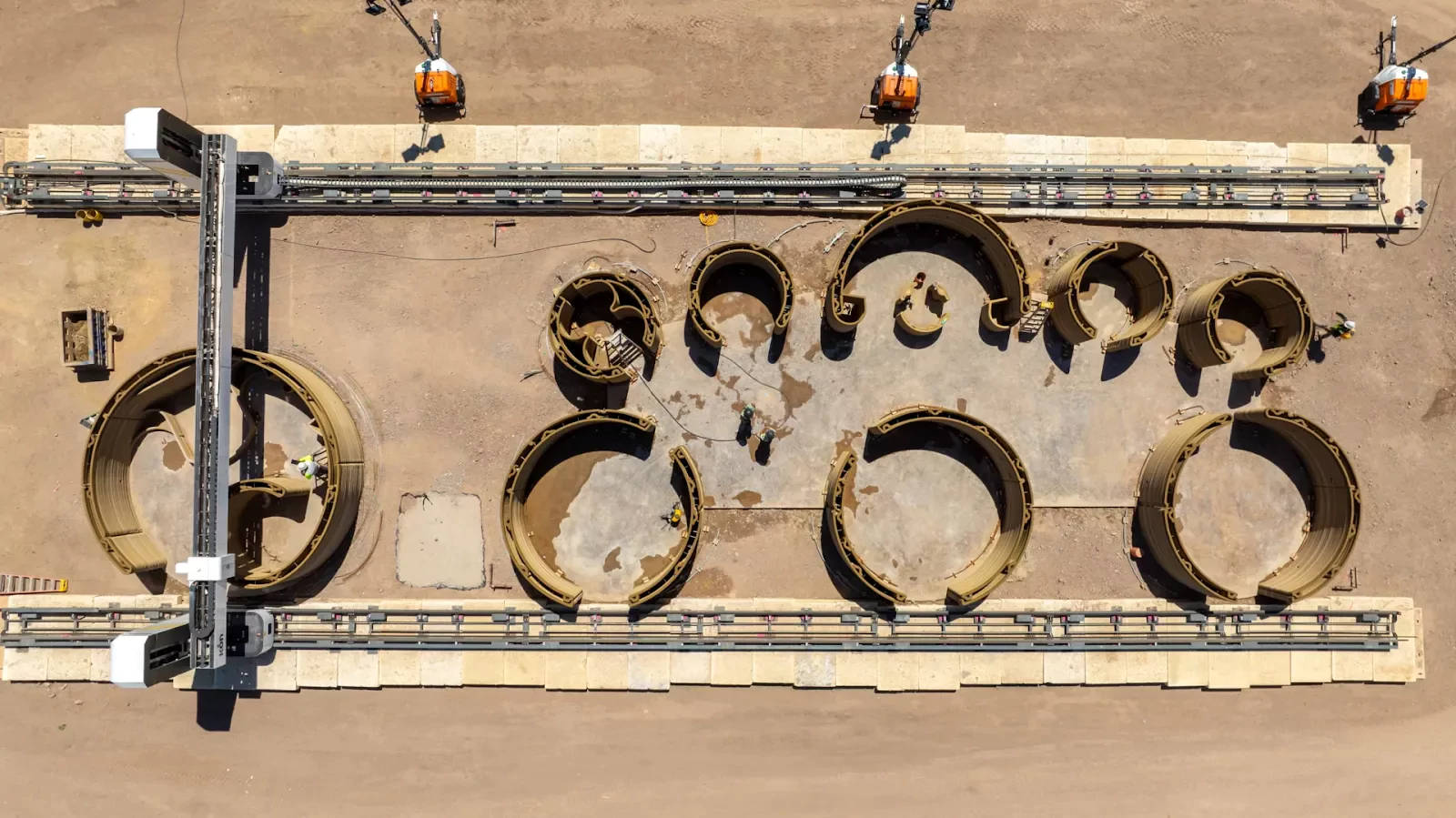
Material: Lavacrete, developed by ICON, is not a simple concrete. It’s a complex, low-carbon mixture that can be fine-tuned in real time to adapt to the desert’s extreme humidity and temperature fluctuations. By incorporating local sand, soil, and pigments, the printed layers form a striated, geological texture, giving each building a distinct, adobe-like finish that harmonizes with the surrounding Chihuahuan Desert landscape.
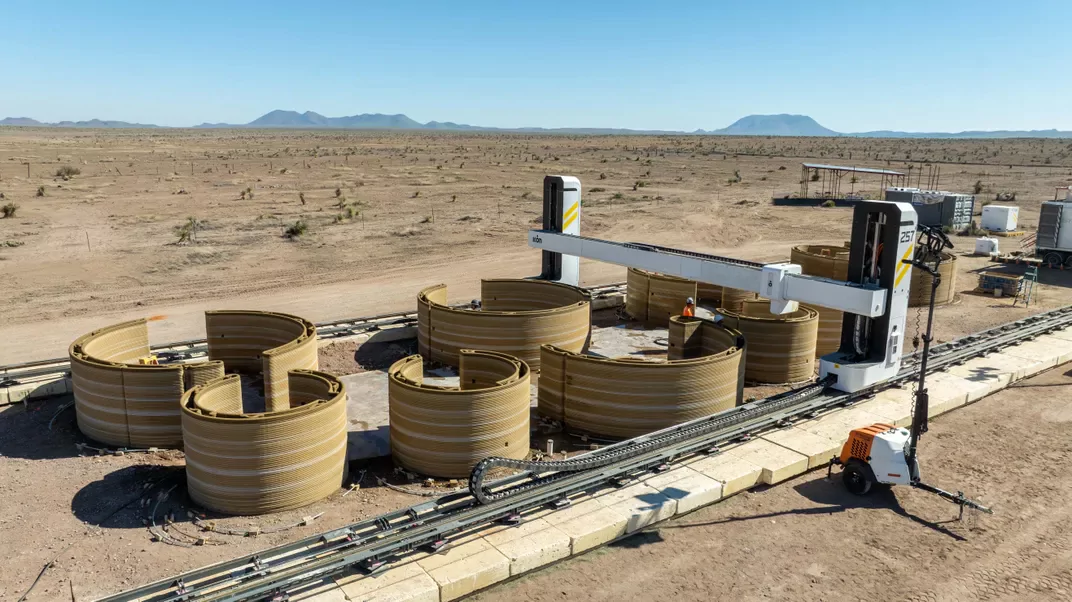
Freedom of Form: Curves, vaulted surfaces, parabolic geometries, all shapes that are costly or difficult in traditional wood/steel/concrete construction. The 3D method allows fewer constraints and a more expressive architectural form. Once the printing is complete, human builders step in to install the roofs, windows, wiring, and other finishing details. This hybrid approach leverages the speed and geometric freedom of robotics combined with the skilled craftsmanship of human labor.
Aesthetic, Context & Sensitivity to Place
Though high-tech in execution, the design remains deeply rooted in the character of its setting. Color, texture, and material choices draw directly from the West Texas desert, using sandy hues, soil-toned pigments, and stratified terrain lines to help the structures blend seamlessly into the landscape.
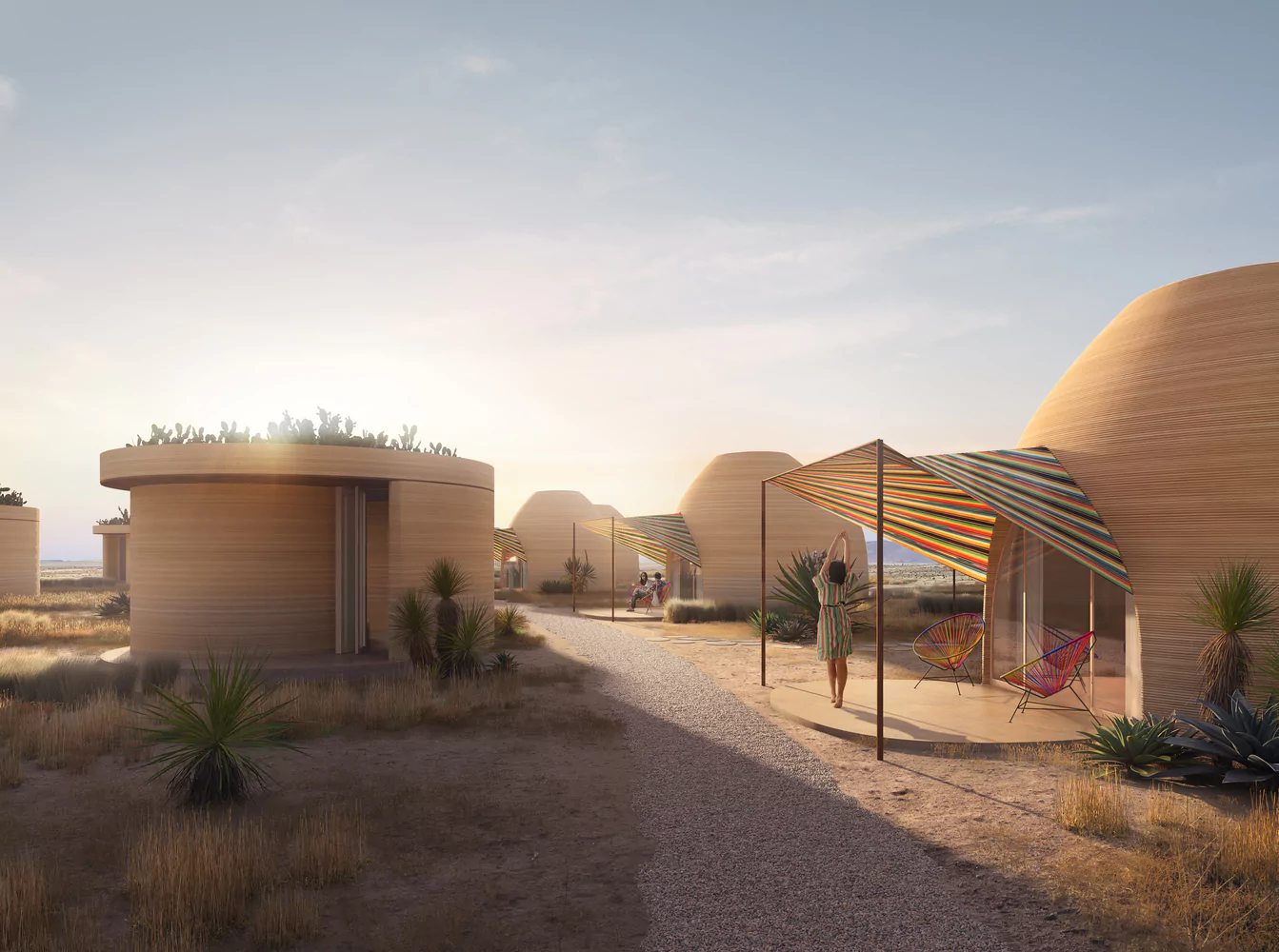
Views of the Davis Mountains, the immense night sky, and cosmic motifs inform the orientation and form of the buildings, with skylights carved into the curved ceilings to frame the stars for guests. Throughout, the architectural language balances past and future, preserving the nomadic, retreat-like atmosphere of El Cosmico’s original campground while pushing the limits of what robotic construction can achieve.
Challenges, Costs & Social Implications
- Cost to guests: Nightly rates for hotel units are expected to range between US$200 and US$450.
- Scale of private homes: The “Sunday Homes” are luxury residences, characterized by high costs, distinctive architecture, and more exclusivity than mass-affordable housing.
- Labor and technology: As with many disruptive construction methods, questions arise regarding the displacement of skilled labor. Some view 3D printing as both enabling and potentially reducing certain traditional trades.
- Timeline: Construction is underway now; expected completion is 2026. The original 21-acre El Cosmico will remain operational through 2025.
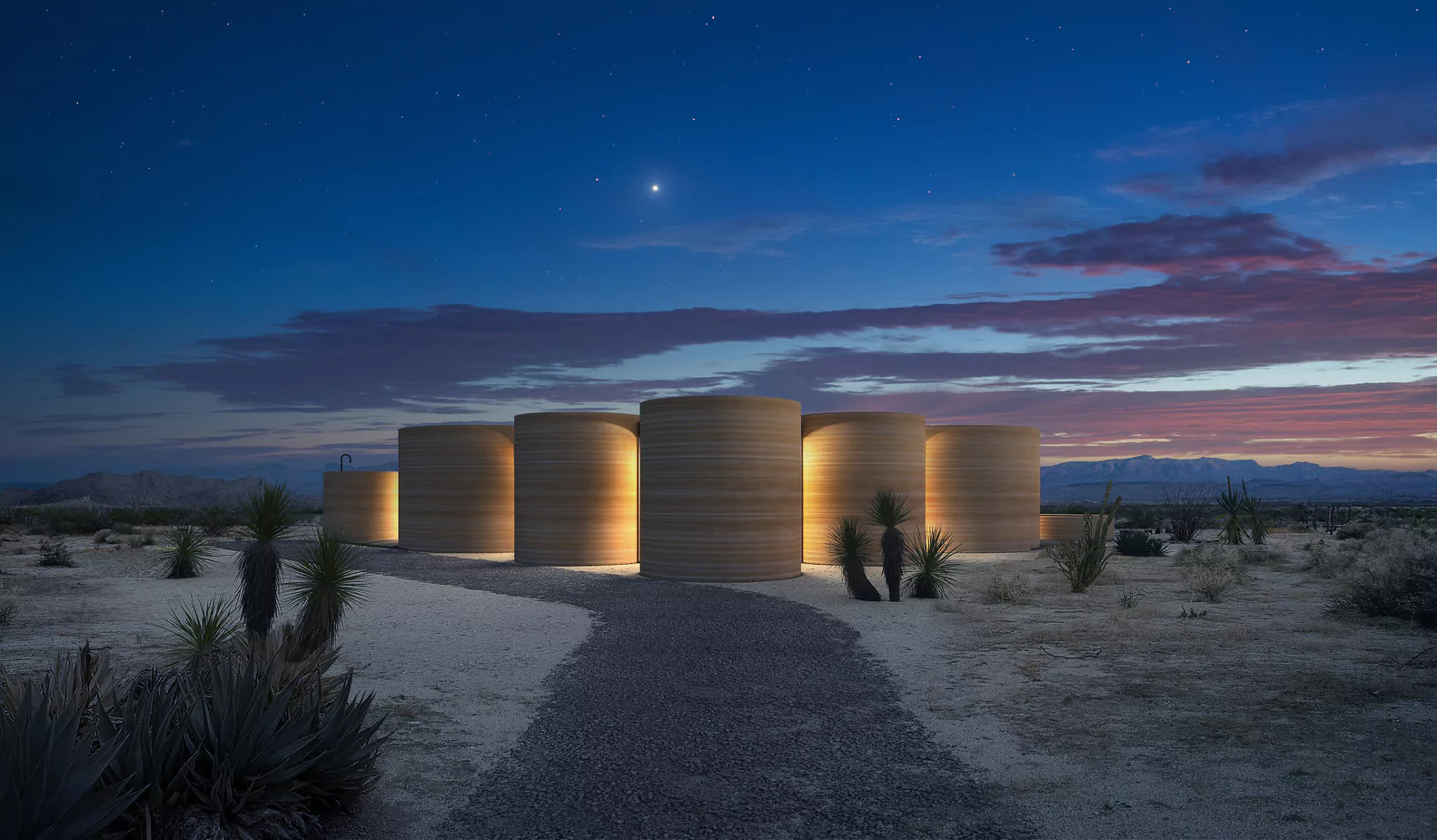
El Cosmico’s 3D-printed transformation is more than a design experiment; it’s a glimpse of architecture’s future. By scaling robotic construction to an entire resort, it proves that 3D printing can create complex, sculptural forms. El Cosmico shows that luxury and environmental sensitivity can coexist, inviting architects and travelers alike to experience a world literally printed into the Texas desert, layer by layer.
References
- https://parametric-architecture.com/el-cosmico-worlds-first-3d-printed-hotel/?srsltid=AfmBOoovop7gLLfZqtnhJAaKaton9PxvFwsGsXqUSXBHswEjykNNWYrn
- https://singularityhub.com/2024/10/10/youll-soon-be-able-to-book-a-room-at-the-worlds-first-3d-printed-hotel/
- https://www.designboom.com/architecture/icon-bjarke-ingels-big-3d-printed-el-cosmico-marfa-texas-03-08-2023/
- https://elcosmico.com/tomorrow/
- https://www.dezeen.com/2023/03/08/big-icon-3d-printed-hotel-el-cosmico-marfa/
- https://www.archdaily.com/997677/icon-and-big-reveal-design-for-el-cosmico-a-3d-printed-campground-hotel-in-marfa-texas
- https://www.smithsonianmag.com/smart-news/workers-just-started-building-the-worlds-first-3d-printed-hotel-in-the-texas-desert-180985166/
- https://www.iconbuild.com/newsroom/el-cosmico-and-icon-announce-groundbreaking-of-worlds-first-3d-printed-hotel-and-development-in-marfa-texas
